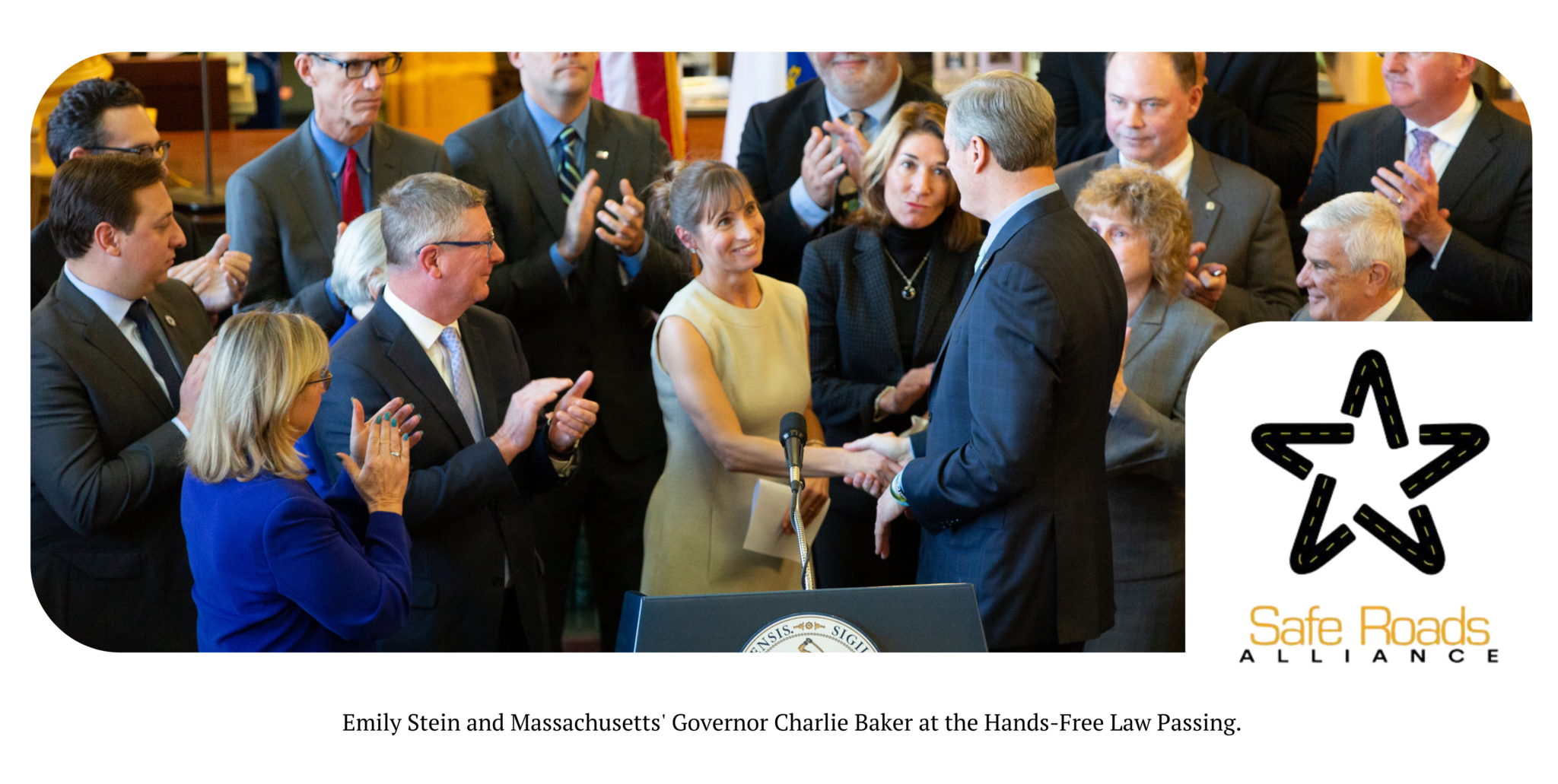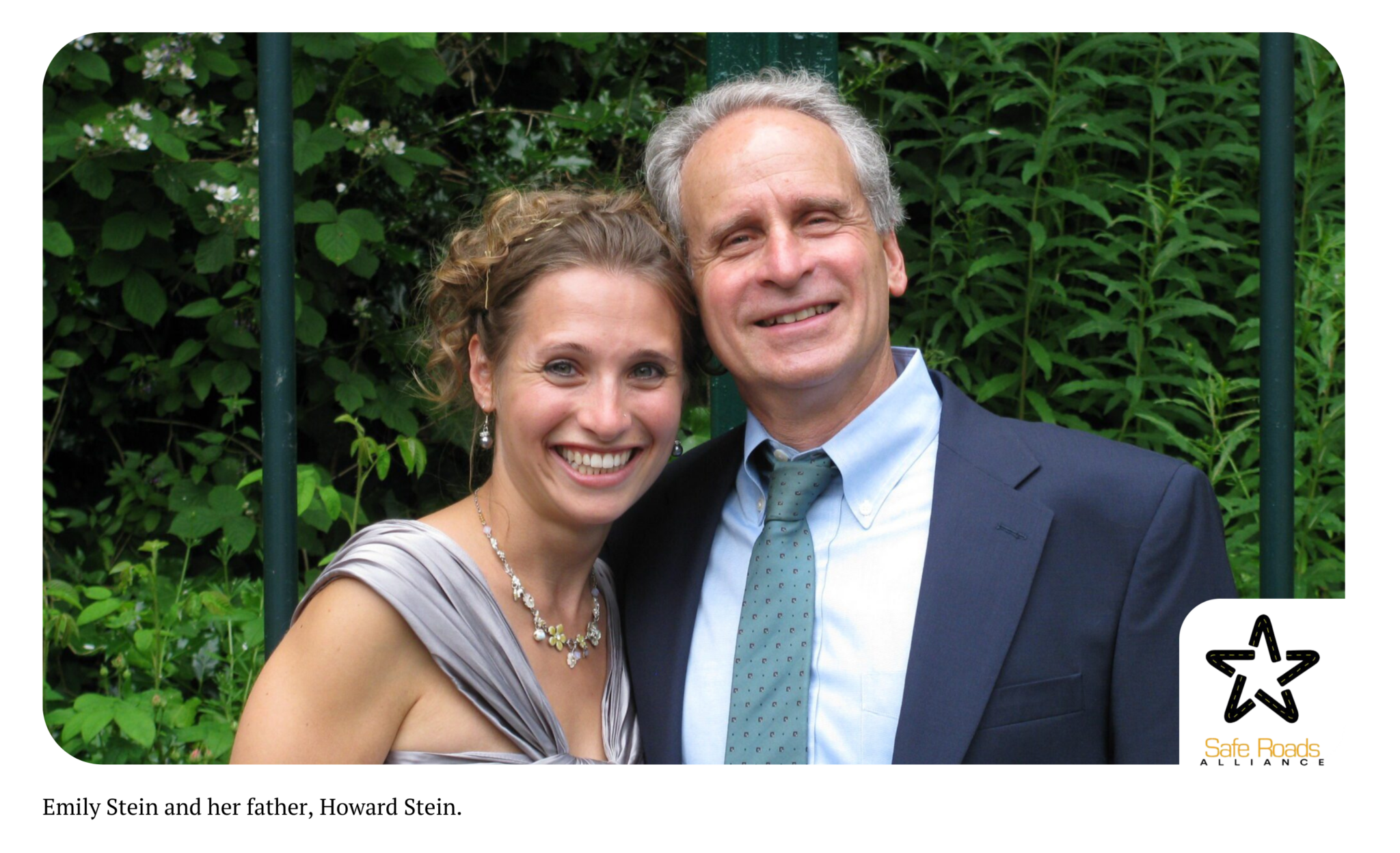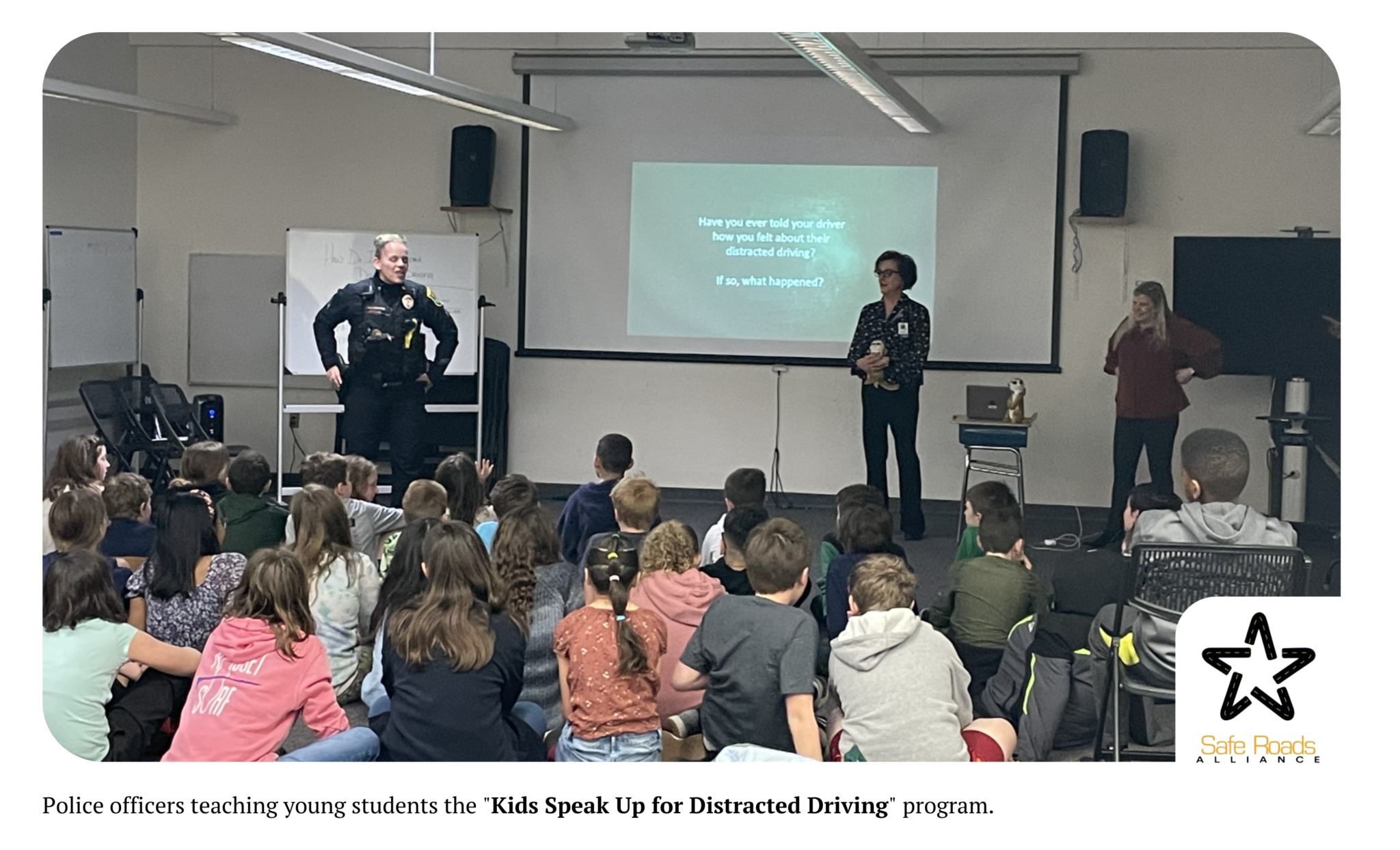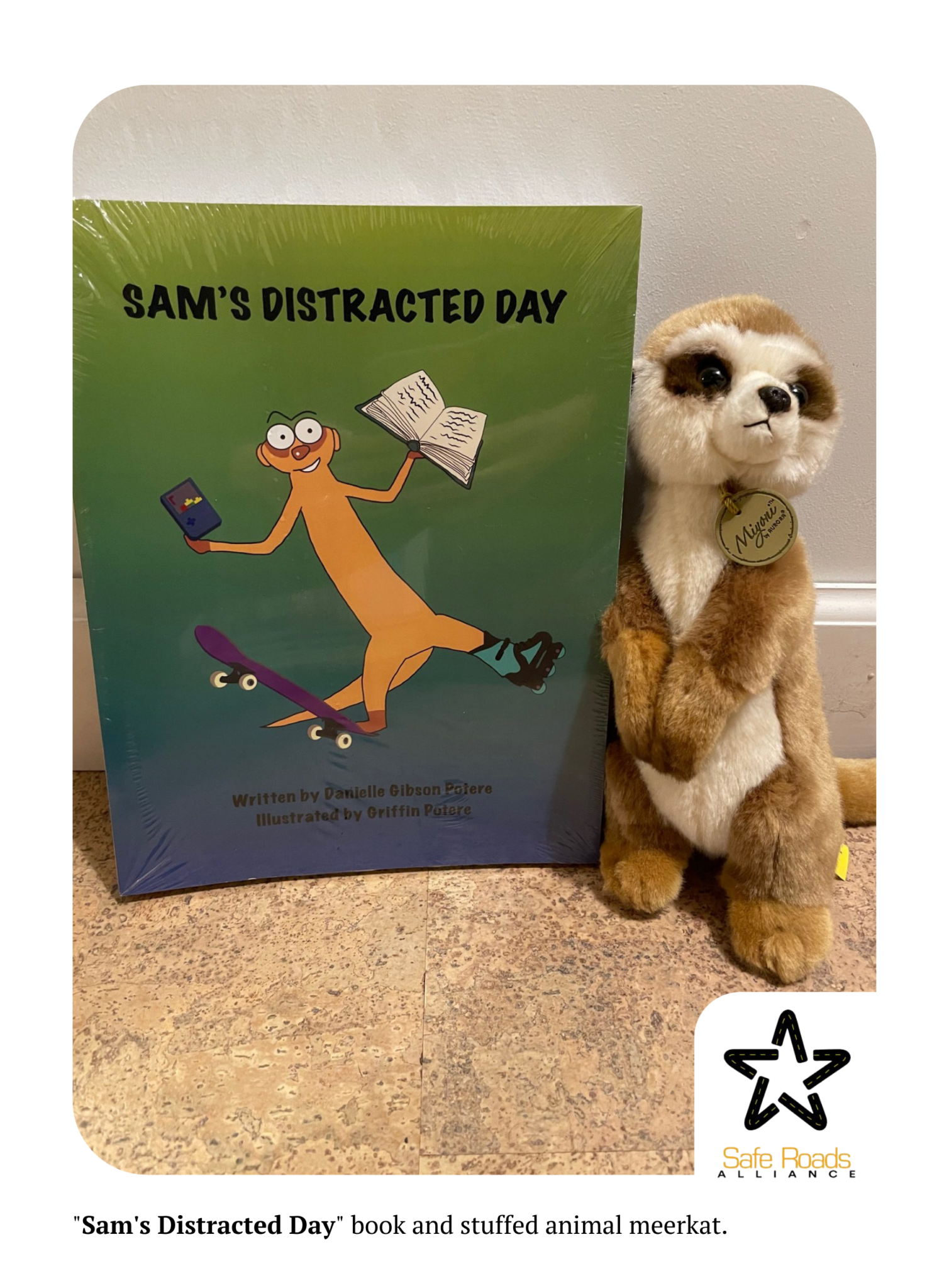From personal loss to public advocacy, Safe Roads Alliance’s Emily Stein fights against distracted driving

In the aftermath of losing her father to a distracted driver, Emily Stein became a fierce advocate for safe driving. Now, as the Executive Director of Safe Roads Alliance, she recounts her transition from the tragic loss of her father, to championing efforts to prevent such tragedies for others.
Safe Roads Alliance offers proactive educational programs that emphasize the need to change the prevailing American driving culture.
We caught up with Emily to hear how Safe Roads Alliance is educating parents, young drivers, and children about the dangers of distracted driving.
Our conversation has been edited for brevity and clarity.
CMT: Can you share your story with us?
Emily: Safe Roads Alliance was founded in 2006. They created The Parent’s Supervised Driving Program in 2010 after seeing there was a gap in education for parents and caregivers of teenagers learning to drive. After my dad was killed in 2011, I connected with Joel Feldman from EndDD. He became my mentor and helped build my advocacy, courage, and strength around speaking out against distracted driving.
I spoke during a distracted driving presentation at Fisher College where Jeff Larson, the previous president of Safe Roads Alliance was in attendance. He gave me his card and it took me about a year to feel prepared to reach out. Grief is different for everyone, and it took me time to feel like I was ready to reach out to more people in the driving safety field. In the following years, I continued doing advocacy on my own and for a hands-free law. When Jeff was moving into a new position, he asked if I could take over Safe Roads Alliance. I said yes and started this new role in early 2016.
CMT: How did your dad’s death inspire you to educate the public about the dangers of distracted driving?

Emily: When my dad was younger, he was a 4th-grade teacher. When I was a child, he transitioned into carpentry and woodworking.
Throughout his life, he held onto that teacher mentality. He always shared his wisdom with those working with him and has a really special way of helping people understand things.
He would never boss them around, he would show them with patience how to build their skills. And I know many people kept those skills after working with him. I felt like the best thing that we could do to honor my dad was to go out and educate the general public about his story, what killed him, and what people are capable of doing if they look down at their phones and aren’t paying attention to the road.
CMT: What is the mission of Safe Roads Alliance?
Emily: Safe Roads Alliance is dedicated to saving lives through safer driving. If we can save one life, if we can prevent one crash, that is our goal. We want people to be aware of their own driving choices and how it affects other people.
One of my main goals since taking over Safe Roads Alliance has been networking, connecting with other groups and advocates across the country, within our state, and connecting with state agencies too. We want to get the safe driving message out to both new and future drivers, as well as adult drivers who might have developed some bad habits behind the wheel.
CMT: What programs do you offer to raise awareness and teach drivers?

Emily: We offer two different programs to help teach the appropriate driving skills to new drivers, as well as to prevent distracted driving. We offer The Parent’s Supervised Driving Program and Kids Speaking Up for Road Safety.
The Parent’s Supervised Driving Program is a sponsorship-based publication and a free magazine-style printed guidebook that is currently distributed in 26 states. We also offer a digital platform and an app that goes along with it called RoadReady. These are free resources for the state and free for parents and caregivers.
 In the states where our program is distributed, a teen will receive a guidebook when they are issued their permit. We want their parent or caregiver to review the book with their teen and teach them the proper way to drive safely. It starts with knowing about the specific car you drive; how to adjust the mirrors, turn on the headlights, etc. The guidebook then advances to parking, city and highway driving, and how to share the road with vulnerable road users.
In the states where our program is distributed, a teen will receive a guidebook when they are issued their permit. We want their parent or caregiver to review the book with their teen and teach them the proper way to drive safely. It starts with knowing about the specific car you drive; how to adjust the mirrors, turn on the headlights, etc. The guidebook then advances to parking, city and highway driving, and how to share the road with vulnerable road users.
After they are comfortable with their car and start driving, they can track their driving hours in the RoadReady app. Each state has a different number of required driving hours that teens must complete to get their licenses. We have over a million families who use the app each year. 

 Kids Speaking Up for Road Safety is a program Joel Feldman and I created together to teach younger children about road safety awareness. Its purpose is to help students understand what it means to be distracted, understand how passengers’ actions can distract drivers, give passengers tools to respectfully point out when distracted driving is occurring, and bring their families together to come up with ways to avoid distractions while driving. We hope that they will understand the dangers of distracted driving so that when they become drivers, they will be less likely to drive distracted.
Kids Speaking Up for Road Safety is a program Joel Feldman and I created together to teach younger children about road safety awareness. Its purpose is to help students understand what it means to be distracted, understand how passengers’ actions can distract drivers, give passengers tools to respectfully point out when distracted driving is occurring, and bring their families together to come up with ways to avoid distractions while driving. We hope that they will understand the dangers of distracted driving so that when they become drivers, they will be less likely to drive distracted.

Schools that register for the free program will receive a picture book called “Sam’s Distracted Day,” and a stuffed animal meerkat to represent Sam from the storybook. The teacher takes them through the lesson and teaches them how they can speak up to their driver respectfully when they notice distracted driving.
As part of the package, we offer extracurricular activities. So, if a school wants to designate a safety week or a bike, walk, and drive safety week, they can incorporate activities in subjects like math, English, gym, art, music, etc. We have all of these fun additional lessons but the core of the program is a single 45-minute lesson.
There are many social-emotional concepts built into the lesson. We tell the kids, there is no wrong answer when you share your feelings. We teach them “I” statements to use to address the problem. For example, “I feel scared when you look at your phone while driving.” Then, we teach them to make an action plan together with the driver and say a statement like “I can read that text to you.”
It’s also important to teach kids their responsibility when they’re in the back seat. We teach them how to be safe passengers and how to help out the driver when needed.
CMT: What are the challenges Safe Roads Alliance faces when trying to teach parents and students about the dangers of distracted driving?
Emily: The American driving culture is a huge obstacle. It’s like a huge boulder that we need to keep rolling every day. I thought when we passed the hands-free law in Massachusetts that it would be a big step towards safer roads. But, then Covid came just as the law was going into effect, and that derailed a lot of progress.
Unfortunately, even when people are getting a $100 citation, it’s not enough to change their behaviors. What is going to do that? Is it going to be someone they know getting into a crash that finally changes them?
But that’s where the power of kids intervenes. We hope that when kids speak up the moment they see a distracted driver, or when they come home and share with their parents what they’ve learned, it will gradually help to create a change in our driving culture.
CMT: As the back-to-school season is in full swing, what can we share with parents and students to keep them safe this school year?
Emily: We need to focus on safety outside the school as much as we focus on safety inside the school. Parents, teachers, and school officials can look into our programs and offer them in their classrooms. Kids need to get to and from school safely and this is something that is in our control.
Another big thing to remember is to not rush. As a parent, I always feel like I’m in a rush and running late. It’s okay if your kid is a couple of minutes late. Rushing can lead to speeding, carelessness, and distraction, and it is not worth the risk. Everything can wait until you reach your destination. Whether you’re a parent of a teen driver or a child in the back seat, remember to take a deep breath before starting your drive. Buckle up, put your phone on silent and away, and focus on the road.